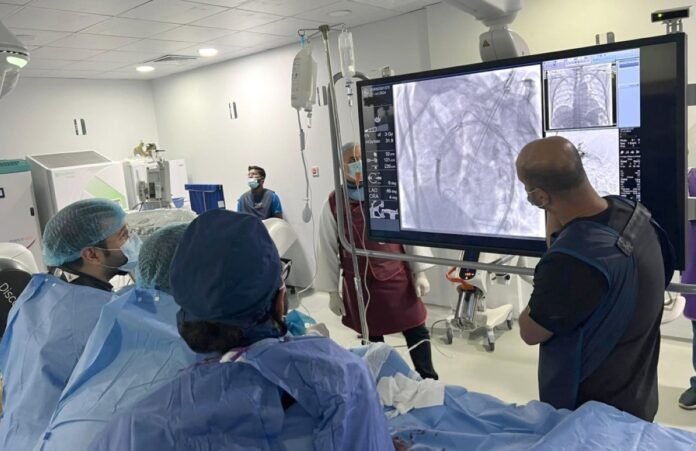Kuwaiti doctors continue to demonstrate exceptional skill and innovation through a series of achievements, both locally and internationally. They are setting new surgical excellence and advanced medical care.
These complex procedures were performed via telerobotic technology from over 7,000 kilometers away. This marked the largest number of consecutive remote surgeries ever performed globally in such a short timeframe.
In September 2024, the Ministry of Health announced Kuwait’s first-ever kidney exchange transplant among family members. They launched the National Kidney Exchange Program, enhancing transplant services and reducing waiting times.
In August 2024, glaucoma specialist Dr Abdullah Al-Kandari performed a pioneering glaucoma surgery. This advanced precision treatments for this sight-threatening disease.
In July 2024, a vascular surgery team at Mubarak Hospital, led by Dr Abdullah Al-Fawaz, became the first in the Middle East to repair a thoracic aortic arch aneurysm using a customized, surgically modified stent implanted via catheter.
In June 2023, it pioneered the use of smart mesh technology for hernia repairs.
The hospital also successfully conducted Kuwait’s first artificial heart pump transplant — only the second in the Arab world.
In January 2023, it developed the “Hidden Tummy Tuck” technique under Dr Humoud Al-Rashidi. This revolutionized reconstructive and aesthetic surgery in the region.
That same month, Jaber Al-Ahmad Hospital performed Kuwait’s first dual joint replacement surgery — hip and knee — on an 82-year-old patient.
In November 2022, the hospital introduced AI-powered endoscopy to Kuwait, enhancing the precision of colon and stomach tumor detection.
Notably, Kuwaiti surgeons have made major advances in cardiac care.
They introduced catheter-based aortic aneurysm repairs without dye, high-risk coronary interventions, and the country’s first-ever liver transplant at Adan Hospital.
In 2019, a team led by Dr Abdullah Al-Enezi performed the Middle East’s first transcatheter surgical valve replacement. This eliminated the need for open-heart surgery.


